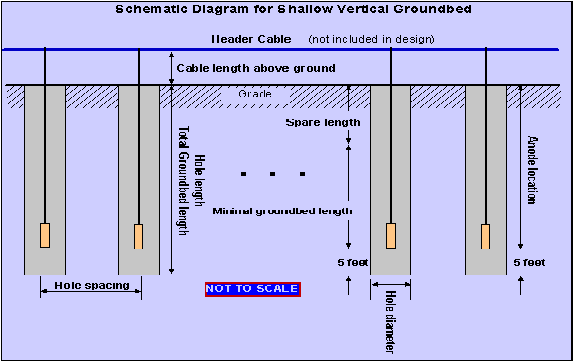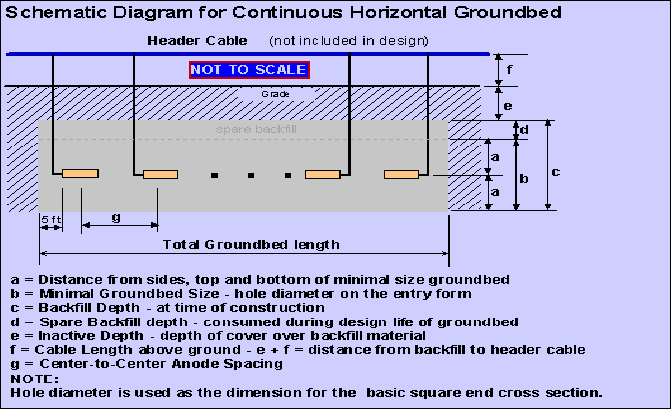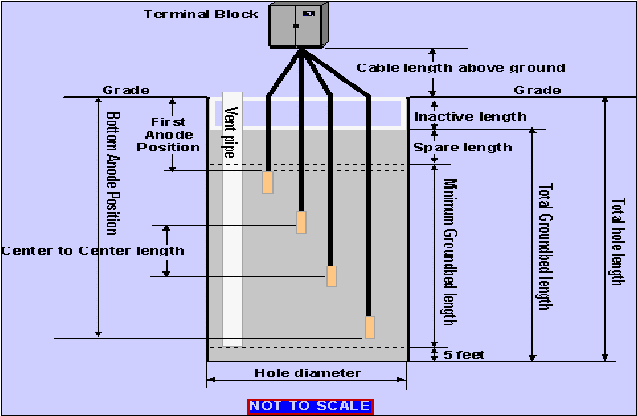
| 5. Cathodic Protection | |
|
5.9 Groundbed Design [1/3] |
|
Groundbed Design
For underground structures requiring cathodic protection, the location and nature of the site where the anode is placed needs careful consideration. The location which is specifically prepared to house a single or a combination of anodes is called a groundbed.
Types of groundbeds are classified as:
Shallow Vertical Groundbed: The individual or multiple anode groundbed resistances can be determined using Dwight formula or can be determined graphically

Shallow Horizontal Groundbeds: Sometimes due to unfavorable soil conditions shallow horizontal groundbeds are preferred. Again earth resistances can be determined by calculation.

Deep Well Groundbeds: Where soil resistivity at the surface are very high, a series of vertical anodes are sometimes installed in deep well groundbeds (up to 100 m and more deep).

1. Impressed Current Anode Groundbeds: Once a location is selected the type of groundbed, choosing anode material and combination must be designed.
A basic design incorporates the use of a steel casing to prevent the collapse of the drilled hole. Several anodes attached together with a rope are placed inside the casing. The remaining space is then filled with carbonaceous material. Once the groundbed becomes operative the steel casing will be consumed. After the pipe corrodes away the anode and backfill become active. Deep wells are generally fitted with a vent to allow gases to escape. Gas entrapment tends to increase the groundbed resistance. It should be added that in certain rock formations anodes have been installed satisfactorily without a steel casing. Although deep well groundbeds provide good current distribution they are expensive to construct because of the cost of the drilling. Careful design is also necessary because anode failures cannot be easily rectified.
|
|